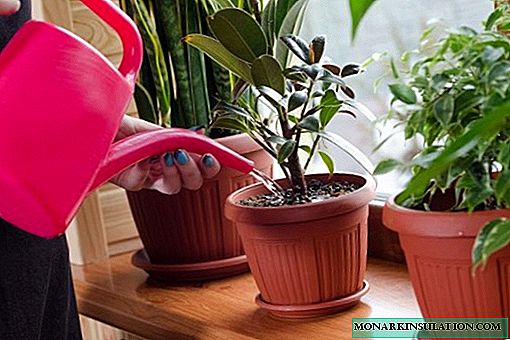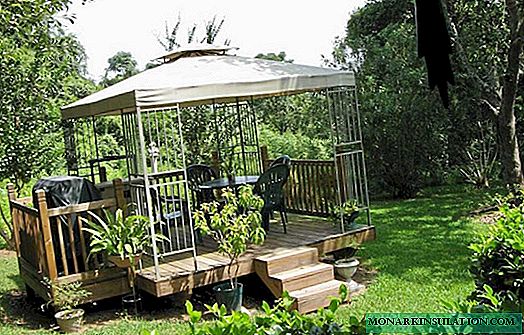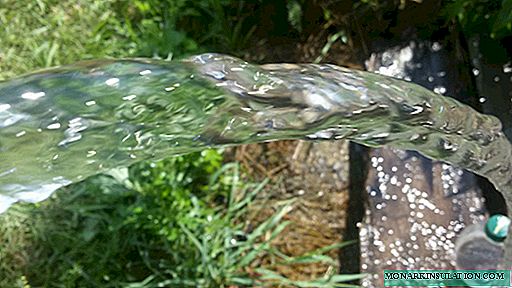
A well is one of the most popular methods of water production, the use of which allows owners of suburban areas to have a double benefit: obtaining high-quality water and saving financial costs. Having drilled a well, it is possible to provide water supply at any time of the year. But a narrow hole in the ground cannot yet act as a full-fledged source of water supply; only equipping a well with water allows us to make life-giving moisture suitable for use and consumption.
Selection of necessary equipment
After drilling a water well, you can begin to equip it. To ensure uninterrupted water supply, it is necessary to install special equipment, which includes: caisson, pump, hydraulic accumulator and head for the well.

The arrangement of water wells in the country is generally the same, differences can only be in the selection and installation of individual elements
Before proceeding with the arrangement of the well, it is necessary to correctly select the structural elements in order to protect themselves in the future from unnecessary hassle and the cost of repairing expensive equipment.
Appointment of the caisson
Caisson is one of the main structural elements for the arrangement. Outwardly similar to a barrel, a waterproof container is designed to protect water in the intake system from freezing and mixing with groundwater.
In a sealed design, you can arrange automatic equipment, purification filters, a membrane tank, pressure switches, pressure gauges and other components, thereby freeing living spaces from unnecessary units and devices. The caisson, as a rule, is equipped with a neck with a tight-fitting lid.

Caissons are made of corrosion-resistant metals - stainless steel and aluminum, or of plastic, which is not susceptible to decay and other destruction processes
Submersible pump
In order for your well to serve properly over the next several decades, you must correctly choose a submersible pump.

The choice of product depends on its performance and maximum pressure. To date, the most popular pumps are European manufacturers, for example: Grundfos, Water Technics Inc
In the calculation, as a result of which the product parameters are determined, the diameter and depth of the well, the length of the water pipes, the peak flow rate from all connection points are taken into account.
For stable operation of the water supply system, it is necessary to maintain a working pressure in the range from 1.5 to 3 atm., Which is equal to 30 m water column.
Accumulator
The main function of the accumulator is to maintain and smoothly change the fluid pressure in the intake system. In addition, the tank provides a minimum supply of water and protects against water hammer. Devices differ only in the volume of contained water, ranging from 10 to 1000 liters.

For a small country house with 3-5 cranes, it is enough to install a hydraulic tank with a capacity of 50 liters
Wellhead
Installing the head allows you to protect the well from pollution by debris and dripping melt water. The design of the sealing well is also intended to simplify the operation of the technical well, and in particular the suspension of the pump.

The head can be made of both plastic and cast iron. Plastic products are able to withstand a suspended load, the mass of which does not exceed 200 kg, and pig-iron - 500 kg
The main stages of the arrangement of the well
Household owners who do not have enough time, knowledge and skills to understand communication schemes can always entrust this responsible work to specialists.
Particularly skilled craftsmen will do everything themselves. But even if someone will carry out all the work for you, you will need to check everything. So, the organization of autonomous water supply takes place in several stages.
Installation of a caisson
To install the caisson, it is necessary to prepare a pit, which should be dug around the well to a depth of 1.8-2 meters. The dimensions of the pit are determined by the dimensions of the tank, on average, its width is 1.5 meters. As a result, a foundation pit should form, in the middle of which a casing sticks out.
If the pit is filled with groundwater, it is necessary to create an additional recess in order to pump them out in a timely manner.
At the bottom of the caisson itself, it is necessary to cut a hole equal to the diameter of the insulating casing. The prepared caisson can be lowered into the pit, placing it in the center of the wellbore. After that, the casing can be cut and welded to the bottom of the caisson by electric welding.
It is necessary to attach a pipe for water outlet and an electric cable to the assembled structure. The caisson is covered with a layer of soil: only a lid serving as the entrance to the structure should remain above the surface.

Caissons are mounted below the freezing level of the soil and are additionally equipped with: a ladder, a storage tank, pumps, compressors and other operational water-lifting devices
Installation of a submersible pump
Despite the fact that the installation process of the pump itself is quite simple, it is necessary to take into account some nuances during its installation:
- Before installing the pump, thoroughly clean the well by pumping water until the water ceases to produce sediment in the form of sand and other particles;
- the pump is placed in the well so that it does not reach 1 meter to the bottom of the source, while being completely immersed in water;
- in parallel with the installation of the pump, a plastic pipe is installed (water is supplied upstream) and a cable (to control the operation of the pump motor);
- starting protection device and non-return valve are mounted after preliminary installation of the pump;
- after installing the system, it is necessary to regulate the pressure in the tank in such a way, it should be 0.9 of the pressure when turned on;
- the cable with which the pump is attached to the head cover must be made of stainless steel or have a waterproof braid.
After installing the pump, you can install the head, which seals and protects the wellhead.
Accumulator installation
It is impossible to ensure uninterrupted water supply without installing a hydraulic accumulator.

The accumulator can be installed both in the caisson itself and in the basement of the building
The principle of operation of the system is quite simple - after turning on the pump, an empty tank is filled with water. When you open the tap in the house, water enters it from the accumulator, and not directly from the well. As the water is consumed, the pump automatically turns on again and pumps water into the tank.
Installation of the tank in the engineering system must be done, leaving free access for repair or replacement in the future. In the place of installation of the tank, in the direction of movement of the water, a check valve should be provided. Before and after placing the tank, a drain valve must be installed to drain the water. Securing the accumulator with a rubber seal will reduce vibration.











